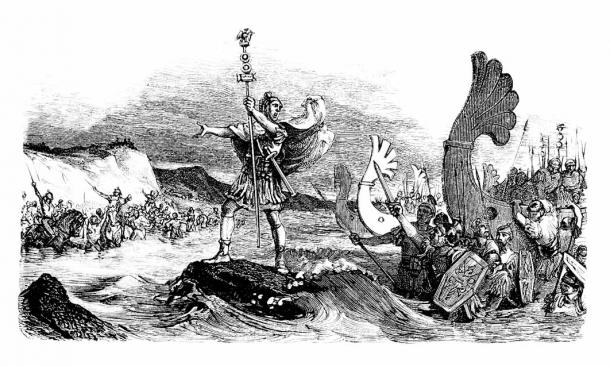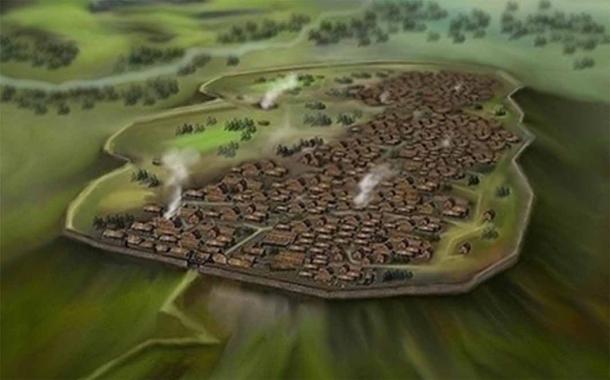
Britain’s Stanwick Oppidum: Capital Of Queen Cartimandua And The Brigantes?
Britain's Iron Age landscape conceals many secrets and has many tales to tell and few stories are more dramatic than that of the Brigantes and their queen Cartimandua, when the Romans arrived in Britain. A contemporary of Boudicca, Cartimandua faced the same choice: to fight the invaders or o cooperate with them. Cartimandua is the first recorded female ruler in Britain, yet her choice to ally herself with the Romans has meant that history has condemned her ever since.

Roman legions landing in Britain (Erica Guilane-Nachez / Adobe Stock)
Cartimandua’s life, her people and her origins are, like so much of this era, shrouded in mystery. It is unknown if Cartimandua was her Celtic name, as the Romans very often ignored ‘barbarian’ names and simply gave people Roman ones and she survives only in the writings of the Romans, as the Brigantes themselves had no written language or culture. Historians are therefore forced to rely on archaeological evidence and the words of Rome when searching for Cartimandua and the Brigantes. Surprisingly, archaeology has yielded some tantalizing information not least from the Iron Age site at Stanwick, which is now believed to have been Cartimanduas’ capital.

Modern-day rendering of a Celtic Oppidum, (first century BC) (Kenny Arne Lang Antonsen /CC BY-SA 4.0)
Stanwick is a large Iron Age hill fort, so large that it is sometimes called an Oppidum, enclosing around 300 acres of land. The fort lies in the North of England 10 miles (16 kilometers) south of Darlington and consists of over nine miles (14 kilometers) of ditches and ramparts. It is one of the largest Iron Age settlements in Europe and perfectly placed to control movement east to west over the Pennines via the Stainmore Pass. Stanwick is unique in the north of England during the Iron Age, but there are sites further south such as Colchester or Chichester which were similarly enclosed by ramparts.
The name Stanwick is thought to either derive from the Old Norse word for stone walls, ‘ steinvegges’ or from the Anglo-Saxon words ‘ stan’, meaning stones and ‘ wic’, meaning settlement.
Like this Preview and want to read on? You can! JOIN US THERE ( with easy, instant access ) and see what you’re missing!! All Premium articles are available in full, with immediate access.
For the price of a cup of coffee, you get this and all the other great benefits at Ancient Origins Premium. And - each time you support AO Premium, you support independent thought and writing.
Rebecca Batley has a Bachelor’s degree in archaeology (University of Wales) and a Master’s degree in Classics. In the field she has worked on sites dating to the Bronze Age, Iron Age, Romano-British, Roman, Medieval, Tudor, Georgian and modern periods. Employed by the Louvre Museum, she researched and excavated at sites in Egypt, Syria, and Israel. She works at the Military Intelligence Archive to help to prepare World War One records for cataloguing and digitalisation and she is a part time History tutor.
Top Image: Caratacus, King of the Silures, delivered up by Cartimandua, Queen of the Brigantes to Roman General Ostorius by Francesco Bartolozzi (Public Domain)
By: Rebecca Batley














